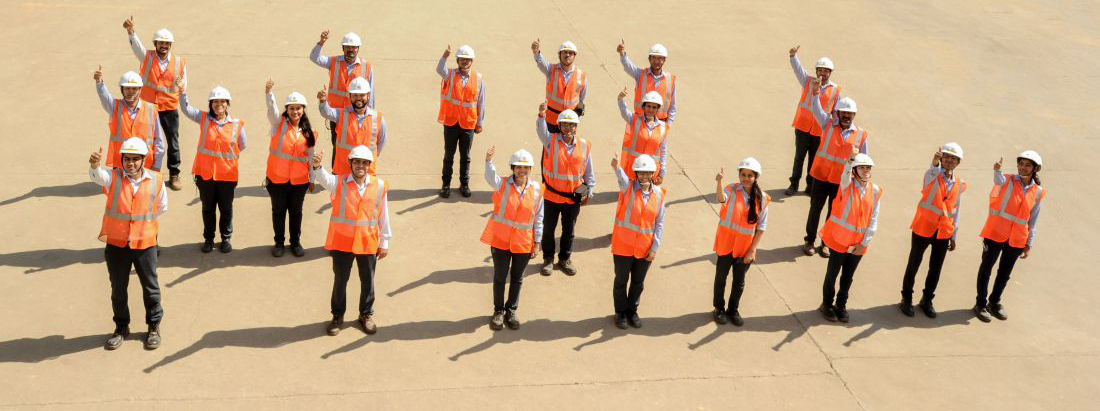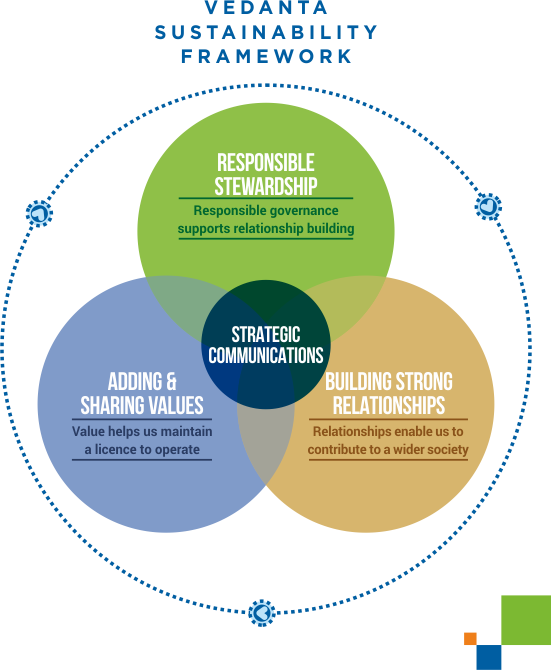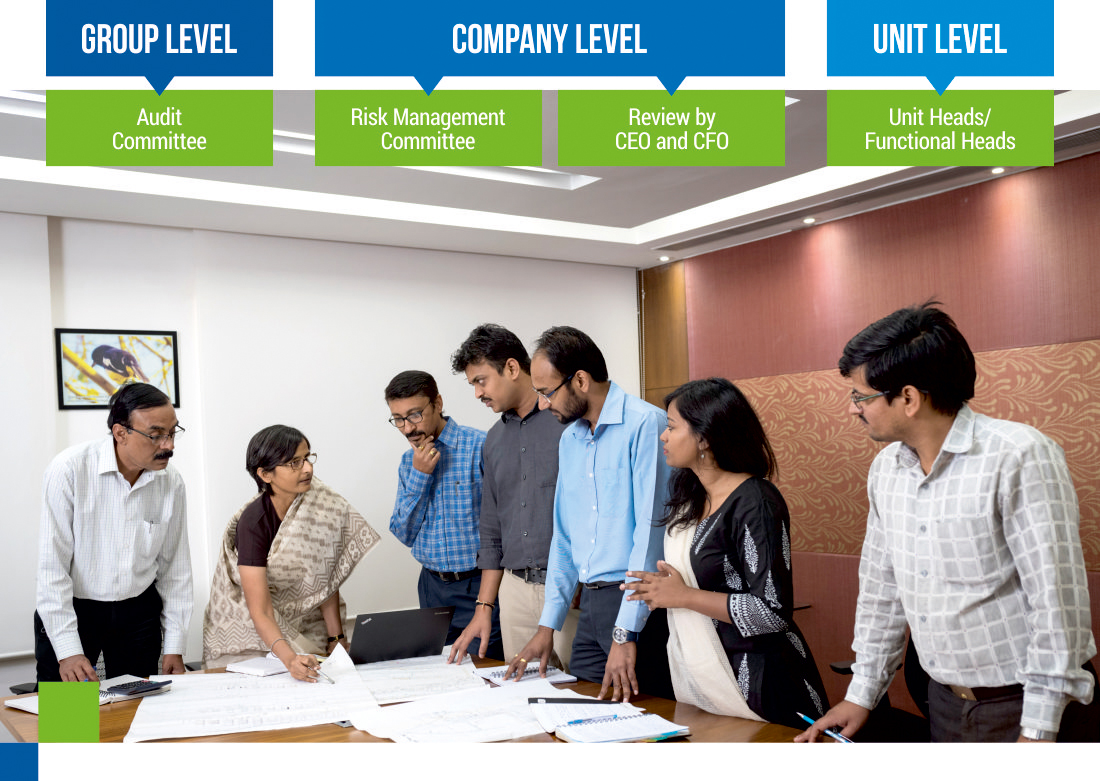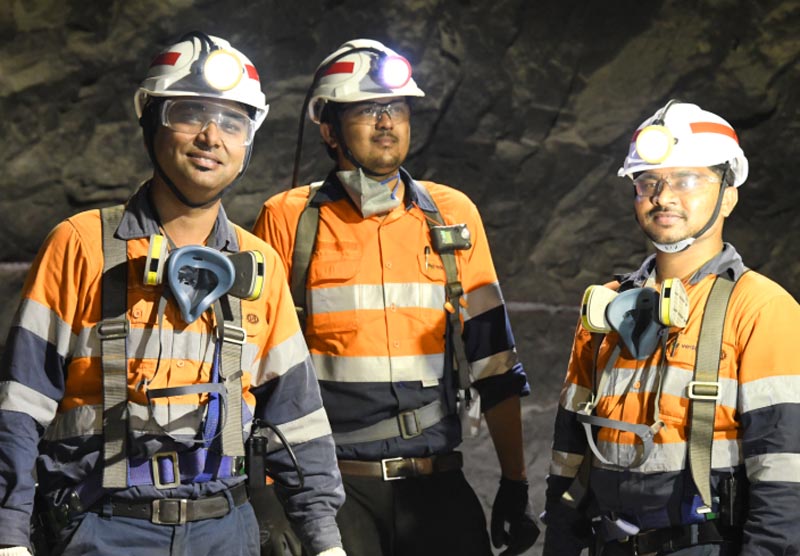Strategy & Approach
Sustainability is the only business strategy at Hindustan Zinc. It entails long-term growth maximisation in a way that is both sustainable and responsive for the stakeholders and the society.
In whatever we do and the way we do it, the ethos of sustainability and growth are built into it. The strategy is aided by sustainability of our products such as zinc which has an intrinsic galvanisation property to protect steel or iron from rusting.
Hindustan Zinc is a Vedanta
Group Company, and we are
aligned to its Sustainable
Development Model which is
reinforced by Vedanta
Sustainability Framework (VSF).
VSF has been developed keeping
in mind multiple internal and
external sustainability
imperatives like materiality and
core values of each of the
business, UNGC's 10 principles,
United Nation's SDGs and
standards set by International
Finance Corporation (IFC),
ICMM and OECD.
Our management systems and processes have been aligned with VSF and to identify any lacunae between the current systems and processes we conduct gap analysis through Vedanta Sustainability Assurance Programme (VSAP). The identified gaps are discussed and reviewed by the leadership teams, and action plans are put in place to ensure compliance within specified period of time.
Our Sustainable Development Model comprises four pillars
RESPONSIBLE STEWARDSHIP
The way we manage our business in a sustainable manner is the measurement of our performance against both our own targets and international benchmarks, in line with our Sustainability Framework.
It is critical to defining how we operate, covering all aspects outlined in our Code of Conduct - including ethical behaviour and whistleblowing - and our approach to risk management.
It also encompasses our health, safety and environmental management - including the way we manage water and energy use, waste, carbon footprint and biodiversity management.
BUILDING STRONG RELATIONSHIP
The strength of the relationships we build with our stakeholders is one of the ways we add value in a broad sense as they play an important role in influencing the strategic direction of our business.
Engaging effectively and understanding the distinct requirements of our various stakeholders we identify groups with significant interest in our operations.
ADDING AND SHARING VALUE
Our operations are based in India and we believe that we can add and share value in the communities where we operate to facilitate the development of the nation.
We create value through structured and collaborative engagement with our stakeholders, including for our employees, our host communities and broader society. This is done not only through the commodities that we produce but through the economic and social contributions we make across our global operations, particularly in the developing world.
STRATEGIC COMMUNICATIONS
The pillar interlocks with the other three pillars of our model and is the guiding principle which enables the organisation to engage with our stakeholders in a transparent dialogue.
This pillar is the vital element of sustainable development, in implementing and strengthening our 'social license to operate' efforts.
This pillar further reflects our commitment to becoming a more transparent and responsible corporate citizen and emphasises on our principles of community dialogue and mutual respect, including free, prior and informed consent to access natural resources.
SUSTAINABILITY VISION & MISSION
We constantly strive to achieve our sustainability vision and mission in alignment with the VSF.
The framework has served as an effective tool to conduct business in line with our core values of trust, entrepreneurship, innovation, excellence, integrity, respect and care.
To excel in operations by upholding world-class standards of governance to
achieve zero harm and zero discharge, while being socially responsible

Sustainability Governance
Sustainability governance enables us to implement our sustainability strategy across our businesses, manage goal setting and reporting process, strengthen relations with our stakeholders and ensure overall accountability. We monitor and review our sustainability objectives and implement the same at regular intervals to comply with the Vedanta Sustainability Assurance Programme (VSAP). VSAP is an internal risk management tool run by Vedanta's Management Assurance System team.
Sustainability Governance Framework
Our sustainability governance framework consists of a three-tier governance mechanism, directed by the Vedanta Board to the units of operations at the site level.
AT THE GROUP LEVEL
QUARTERLY MEETING
Sustainability Committee at Group Level
advises on sustainability policies and framework, clearly setting out the commitments of the Group to manage matters of sustainable development effectively; review and approve targets for sustainability performance & recommend initiatives required to institutionalise a sustainability culture.
AT THE COMPANY LEVEL
MONTHLY MEETING
Sustainability Business Management
Group at Company Level
identifies risks and opportunities and areas for improvement, reviewing the performance and effectiveness of the initiatives.
AT THE UNIT LEVEL
MONTHLY MEETING
Sustainability Review at
Unit/Operation Level
Along with reviewing progress, they are also responsible for data collection and reporting.
We have eight sustainability policies which influence every decision we make and give us the confidence to perform in a safe, ethical, and transparent manner. Through a dedicated sustainability taskforce, which includes officials from the safety, environment, and occupational health division, we drive sustainability throughout our Company.
Sustainability Policies
HSE Principles & Policy | Human Rights Policy |
Energy and Climate Change Management Policy | CSR Policy |
Supplier & Contractor Sustainability Management Policy |
Water Management Policy | Biodiversity Management Policy |
HIV - AIDS Policy
Sustainability Risks
Hindustan Zinc is the world's second largest producer of zinc. The industry that we are operating in exposes us to a variety of internal and external risks. We have put a robust management framework in place to manage these risks, right from predicting them early on to working towards mitigating them.
Risk Governance Structure
At HZL we continuously identify, assess and mitigate risks arising as a result of internal and external factors. Through a formal monitoring process at the unit and Company level, new risks are identified, categorised as per impact and likelihood, mapped to key responsibilities of select managers and managed with an appropriate mitigation plan.
To ensure transparency and efficiency of the measures we have in place a Group Management Assurance System that coordinates the risk management framework, reviewed annually by the Audit Committee on behalf of the Board. This in turn is supported by a Board Level Risk Management Committee comprising the CEO, CFO and Chairman of the Audit Committee. The Head of Group Management Assurance, COO Mines and COO Smelters are permanent invitees of the committee.
Risk Impact and Analysis
The process of analysing risks and its impacts keeps Hindustan Zinc always ready for the future. As we move towards becoming a complete underground mining company, predicting, analysing and mitigating the impacts is imperative. We have analysed all our processes and spheres of influence for potential risks and appropriate mitigation measures are in place.
Some of the key sustainability risks and the kind of impacts they can have on the organisation and the stakeholders have been identified below:
SAFETY, HEALTH
AND ENVIRONMENT
Sustainability Risks
Incidents
Explosions
Leakage of hazardous
emissions and wastes
Impacts
Adverse impact on surrounding communities
and loss of goodwill/brand image
Adverse impact on environment
Litigation and disruption to operations
Penalties | Adverse impact on productivity
Property or body damage
Inability to provide inclusive growth
Disruption to their lifestyles due to
the Company's operations
Discontent amongst the community
Loss of social license to operate
Lack of availability of natural
resources like water, energy
and land
Negative impact on operations and
effect on future projects
Talent retention and lack of
underground mining skills
Adverse impact on productivity
Attrition of talent pool





















